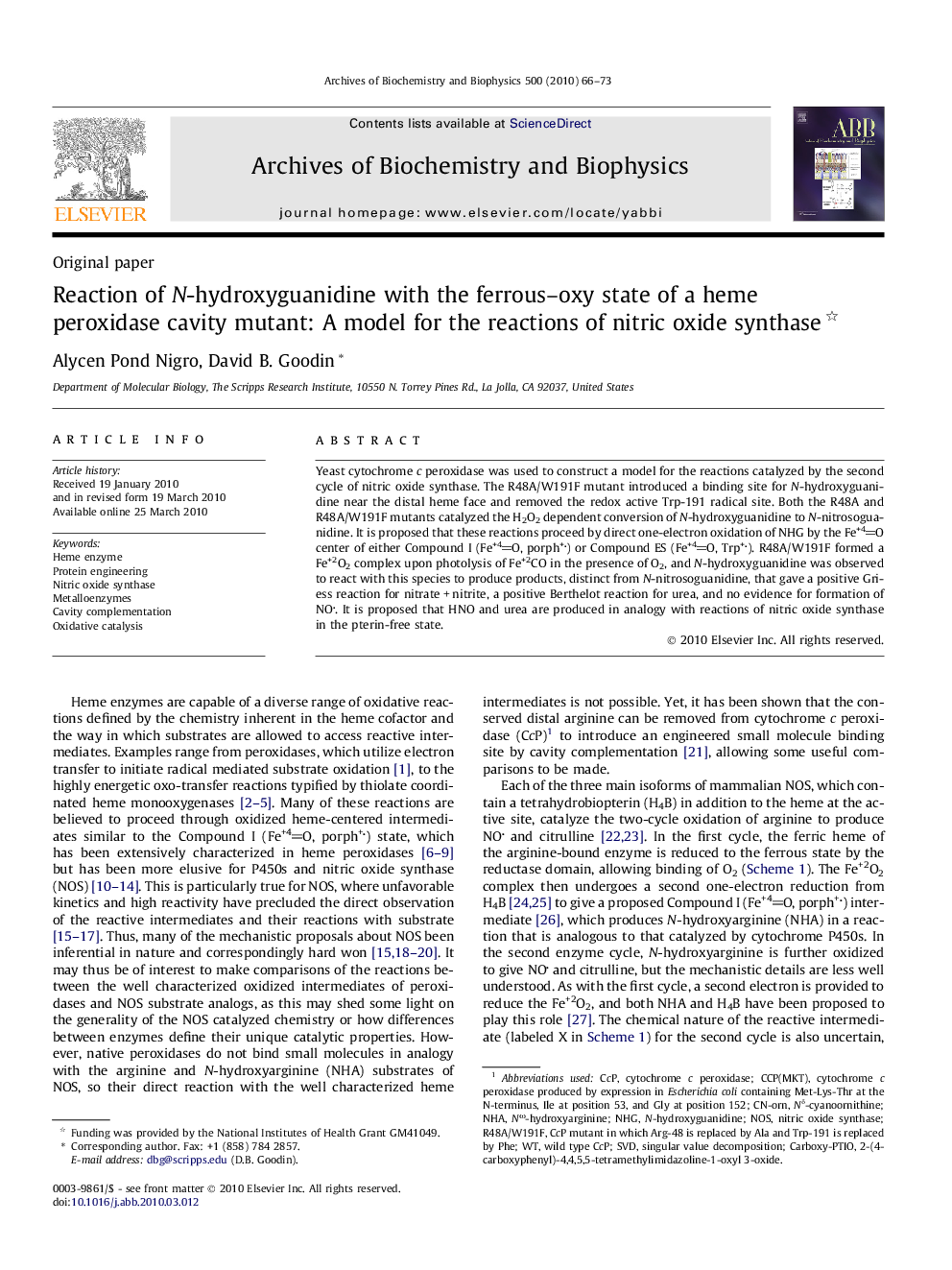| کد مقاله | کد نشریه | سال انتشار | مقاله انگلیسی | نسخه تمام متن |
|---|---|---|---|---|
| 1926054 | 1536432 | 2010 | 8 صفحه PDF | دانلود رایگان |

Yeast cytochrome c peroxidase was used to construct a model for the reactions catalyzed by the second cycle of nitric oxide synthase. The R48A/W191F mutant introduced a binding site for N-hydroxyguanidine near the distal heme face and removed the redox active Trp-191 radical site. Both the R48A and R48A/W191F mutants catalyzed the H2O2 dependent conversion of N-hydroxyguanidine to N-nitrosoguanidine. It is proposed that these reactions proceed by direct one-electron oxidation of NHG by the Fe+4O center of either Compound I (Fe+4O, porph+) or Compound ES (Fe+4O, Trp+). R48A/W191F formed a Fe+2O2 complex upon photolysis of Fe+2CO in the presence of O2, and N-hydroxyguanidine was observed to react with this species to produce products, distinct from N-nitrosoguanidine, that gave a positive Griess reaction for nitrate + nitrite, a positive Berthelot reaction for urea, and no evidence for formation of NO. It is proposed that HNO and urea are produced in analogy with reactions of nitric oxide synthase in the pterin-free state.
Journal: Archives of Biochemistry and Biophysics - Volume 500, Issue 1, 1 August 2010, Pages 66–73